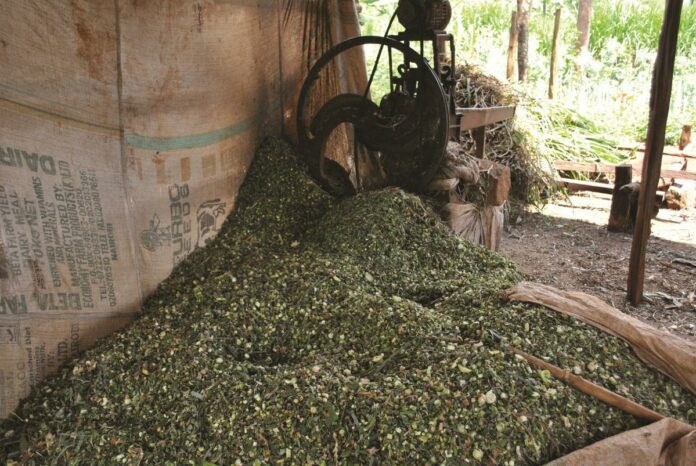BY RONALD KIMITEI
In dairy farming, conservation of forages must be embraced for high production.
Forages are commonly conserved in the form of hay or silage. A majority of Kenyan farmers, however, avoid venturing into either haymaking or silage making, owing to high capital expense, but many of these farmers have sufficient machinery at hand to do both operations.
Conventionally, farmers are used to making hay from pasture grasses like Rhodes or legumes like Lucerne while silage is made from fodder crops like maize.
However silage can still be made from both pastures and legumes alike. Some farmers may ask why one should make silage rather than hay from pasture.
There is something to be said for both forms of conserved forage, so let us consider some of the advantages and disadvantages of making silage rather than hay from pastures:
Advantages of silage over hay
• Silage making is less dependent on the weather patterns and as such silage can be made even during rainy seasons whereas for hay – well, the saying goes “make hay while the sun shines”
• Unlike haymaking, there is less bleaching of the silage by the sun with a consequent loss of carotene (vitamin A).
• Bulky pastures can be ensiled easily, but not so easily made into hay.
• There is no fire hazard with silage.
• Silage is better as a fodder bank because hay oxidizes during storage which considerably lowers its nutritive value.
Disadvantages
• Transportation costs are higher during silage making.
• Hay is more acceptable to young ruminants unlike silage.
Maize is still the crop most widely used for silage in Kenya, but it could be argued that maize now, and in the future, will be grown more for grain production, both for human and non-ruminant consumption, and that only the residue (stover) will be used for ruminant animal production.
Maize stover is, however, very poor in nutritive value, especially in terms of crude protein content. The alternative would then be pastures, particularly perennial pastures for silage. Apart from the issue of maize competition between humans and livestock, other benefits of pasture grass silage over maize silage include:
• Grass silages represent a low-cost roughage feed which can be fed throughout the year including periods of drought because perennial pastures are cheaper to grow compared to annual crops like maize.
In addition, the process of making grass silage is repeated three to four times every year in the same areas. Due to the rapid growth of the grass there is usually an excess of biomass in the rainy season which can be ensiled at relatively low costs, if properly made.
This means that the cost of a kilogramme of grass silage dry matter is way cheaper than that of maize silage.
• Higher crude protein (CP) content which favours increased milk production. Crude protein content of grass pasture ranges between 12 per cent to 17 per cent while that of maize is around nine per cent to 11 per cent.
A dairy cow weighing about 500kg and producing 20 litres of milk requires a minimum of 16 per cent crude protein in its diet.
• The maize crop is vulnerable to diseases like maize leaf necrosis, attack by pests like army worms or ‘choking’ by weeds.
On the other hand, given adequate fertilisation, grasses often thrive and smother weds while remaining relatively resistant to pests and diseases.
Time to cut
The longer the pasture is left before cutting, the poorer the quality, although a greater bulk of material is harvested. It is preferable to sacrifice quantity for quality, but this would depend largely on what class of livestock is to receive the silage.
For instance, lactating dairy cows require better quality silage compared to dry cows. Pasture species like Kikuyu grass, Rhodes grass and Star grass are harvested at a height of between 18cm to 25cm (around five weeks of growth would yield up to 3.5 tonnes of dry matter (DM) or 11.6 tonnes fresh (30 per cent DM) silage per hectare.
Due to the increasing prices of hay coupled with its relative lower nutrient content, pasture silage is becoming a better alternative.
However to fully realise its benefits, the silage needs to be prepared and stored well. The following are requirements for making good pasture silage.
• Before closing off a pasture for silage, graze it heavily or remove any build-up of old herbage material by other means, to ensure that the new growth is of high quality.
• Top dress with nitrogenous fertilizer (like CAN) after herbage removal at closing off to exploit the full potential of the pasture for optimal production.
• Although some field losses will occur, most pastures should be wilted to 30 to 35 per cent DM content. Most pastures cut at the right stage for optimum quality contain about 15 per cent DM. On a hot day the rate of drying will be such that the DM increases about three to four per cent per hour.
This means that one should allow a 3 to 4 hour wilting period during hot weather and about a full day’s wilting period for other times of the year.
• Pasture that is chopped into short lengths (about 2.5cm) when ensiling, is easy to compact and feed out.
• Plan to fill the silo as soon as possible. Otherwise, cover each day’s fill with polythene sheeting to reduce air movement.
• Seal the silage within three days. Fermentation takes three to six weeks. Water or air seepage after fermentation destroys preserving acids and allows fungal development and secondary fermentation to take place.
• Use additives where necessary. Legumes and some grasses like Rhodes, that are low in soluble carbohydrate (less than 10 per cent), will require a carbohydrate additive such as molasses.








